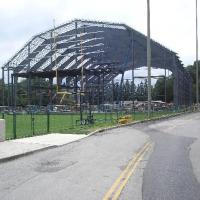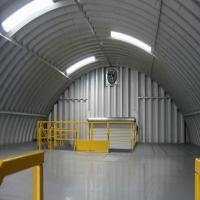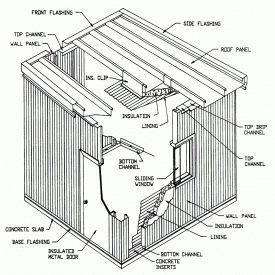Main menu
You are here
Storage Steel Building - Basic Steps
Storage Steel Building

- Should you build a self storage steel building? If so, where?
It would benefit you to hire an expert to help you assess if you should build a self storage building, and if so, where. If you've already got a location in mind, an expert can help you find out what to build and what to charge. This also known as the "feasibility" phase, where you analyze everything about the project: the true start-up costs, the anticipated income, the market, potential locations for construction, demographics, proximity of competition, what customers are likely to pay, and what kind of self storage will appeal to them most, just to name a few.
You'll also have to take into consideration city fees, county fee, state fees, jurisdictional fees and other miscellaneous fees that you may have to spend before you can even begin construction. That's not counting what you'll have to pay for the land, site work (tying in to existing sewer, water, electric and gas lines, importing and exporting fill, soil conditions, rock excavation, etc.), design and construction.
This phase can give you a good idea of the bare minimum you'll be spending to get your self storage steel buildings up and running. If you and the expert determine that the anticipated income for your self storage building will be worth the start-up costs, then you'll be ready to move on to the design phase.
2. Designing how your self storage steel building will look


Design isn't just about drawing a square on a piece of paper and marking off where the self storage units will be. Though you've probably already determined the best mix of unit type and size during the initial phase, now you need the architect to put it all in a design plan. Design plans include the actual site plan as well as landscape design, civil engineering, architectural engineering, MEPs (e.g., electrical and plumbing drawings) and structural engineering.
Each plan usually requires a specialist to design it. For example, a civil engineer has to handle the civil engineering design plan because he would be familiar with policies and restrictions on land use. This is the guy who is responsible for watershed, zoning and placing utilities, to name a few.
3. Constructing your building

Once you've completed the design phase, it's time to move on to the construction phase. This is typically where a general contractor comes in. A general contractor will be responsible for coordinating the construction and providing quality control. The contractor may provide labor and materials, or he may hire subcontractors. He's also responsible for establishing a timeline of the construction.
You should be particularly careful when choosing a general contractor or construction crew for your self storage steel building. You want to make sure that you get somebody that carries insurance and has extensive experience in erecting self storage steel buildings. They should also be professional, which means that they sweep out the units and clean up once the job's done.
source : www.ehow.com

